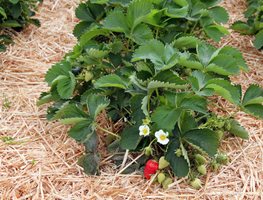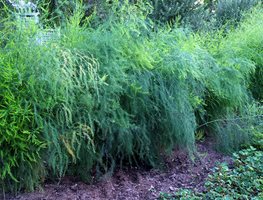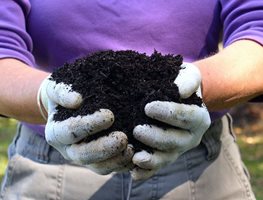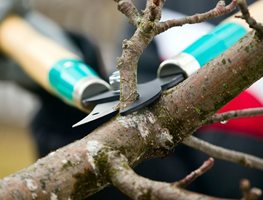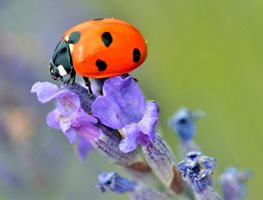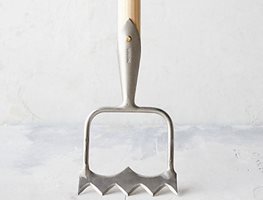July Gardening Checklist for New York, New Jersey & Connecticut
There’s not a ton of planting to do in July, but there are spots throughout the garden to refresh, cut back, and stay on top of to keep your garden looking tidy. This is also the month to make sure you catch any disease or pest problems before they get out of control. And, if you need a break from the heat, try your hand at an indoor horticultural endeavor.
1. Harvest & Rejuvenate Your Berry Patch
Berries can be a very productive crop this time of year, but they may need a little maintenance this month. Keep picking blackberries, blueberries, black currants, strawberries, and any other berries you’re growing as soon as they ripen—don’t leave them sitting on the plant for too long. After your last harvest, consider cutting back canes and plants to the ground. It can feel harsh, but it will actually help the plant rejuvenate for next year. The new growth along with a little fertilizer and mulch will go a long way in replenishing your berry patch.
2. Replant or Refresh Vegetable Beds
Even if heat has turned your garden into a hot mess, that doesn’t mean it has to stay that way. Remove crops that have bolted or others that have fried in the sun. Replant raised beds or vegetable beds with plants that love the heat. It’s still a good time to plant crops such as peppers, tomatoes, and squash. You can also start green beans, cucumbers, beets, carrots, and Swiss chard. Many of these crops will mature by September even if you plant them in July. Kevin Lee Jacobs covers all this in more detail on his blog, A Garden for the House.
3. Let Asparagus Crown Sprawl
Asparagus has become a popular vegetable crop. There are several ways to spruce up your asparagus garden this year. Many people grow purple varieties such as Purple Passion that, as the name implies, produces purple crowns. July is the time to let the asparagus foliage grow, and don’t cut it back until the first frost. The more time the foliage has to absorb sunlight and nutrients, the better the asparagus will be next season. Help them out by giving them plenty of water. Avoid letting them get waterlogged, but keep them moist.
4. Propagate Houseplants from Cuttings
In his book Wild at Home, interior decorator and houseplant maven Hilton Carter has an entire chapter dedicated to propagating houseplants though division or cuttings. During the heat of the day this summer, when you want to escape and get indoors, try your hand at propagating new houseplants. Some plants such as snake plant, ferns, palms, and succulents are often grown from division while plants such as pothos, vines, monstera are propagated through cuttings. Carter also sells handmade propagation stands with glass tubes that are really beautiful.
5. Keep Your Compost Pile Turned & Damp
Turning the compost heap doesn’t have to be done often (there’s even debate about whether it’s needed at all). But turning the heap does keep the decomposing pile aerated and tends to speed up the break-down process. Each time you turn your compost pile, it will reheat and improve the decomposition. It’s also helpful to keep your pile sufficiently moist (instead of wet and soggy). If it’s hot, don’t let your compost heap dry out completely. A dry compost heap will be slower to decompose. Read more about composting at Bonnie Plants.
Don't miss what to do in the garden each month, make sure you're getting our weekly newsletter.
6. Deadhead & Cut Back Overgrowth
In July, the garden can often grow quickly, so be sure to cut back overgrowth if trees, shrubs, and perennials have gotten out of control. When it comes to gardening, in many cases it’s good to have an addition-by-subtraction mentality, and to keep the garden looking neat you’ll have to trim back some sprawling branches and growth. This month, pay special attention to dead or diseased limbs—you need to remove them as soon as possible. Suckers at the base of trees or shrubs should also be removed. If you’re growing spring-flowering shrubs such as rhododendron, azaleas, forsythia, lilacs, spirea, or others, July is the last month you’ll want to prune because if you do it any later, you risk lopping off next year’s flower buds.
7. Keep Insects at Bay Organically
Insects can be difficult to control this time of year, and everyone wants to keep their gardens free from harmful chemicals. There are a few tried-and-true methods to try. One, hand-pick pest from infested plants. This can be a tedious task, but it works—especially if you're vigilant. Two, there are organic sprays available with ingredients such as neem oil that deter many types of pests from eating leaves or laying eggs on leaves. Three, if you plant more native plants, you’ll attract beneficial insects and birds which help keep the insect population in your garden in balance.
8. Deal with Vegetable Garden Ailments
Just like humans, plants do better when they get proper nutrition. Feed plants monthly, but especially if you see disease or pest issues. One great way to provide nutrition is through organic compost or compost tea. Many of the organic no-dig experts, such as Charles Dowding, recommend making your own compost and supplementing with mushroom compost. This helps plants mature quickly and get to a stage where the leaves produce chemicals that insects don’t want to eat.
9. Weed with a Watchful Eye & The Right Tool
Most people don’t find weeding very fun, but if you observe your garden during the process it can help you immensely. You’ll see what plants may need more water and which are getting crowded out. You can see what needs a little help and fix any issues before they get out of control. Plus, if you have the right tools it doesn’t have to be backbreaking. Try the Sneeboer Royal Dutch Hoe Weeder. Learn more ways to deal with weeds without using harmful chemicals.
10. Don’t Fear the Deer
Deer can be one of the most difficult pests in the garden. They are a beautiful sight in the wild, but they wreak havoc in the garden and put fear in the hearts of gardeners because they are so hard to control. If deer are eating your garden, there are a few actions you can take that might help deter them from munching on your prized plants. The most effective method (but also most costly) is to put up fencing. Some gardeners go with double fences (like this Critter-Resistant Vegetable Garden) so deer can’t leap over. Another solution is to plant mainly natives and deer-resistant plants that can either cope with being munched on or are not enticing to deer. One of our favorite garden experts, Karen Chapman, offers an online learning course, Designing a Deer-Resistant Garden (that really puts the emphasis on design), as well as her book Deer-Resistant Design (available 7/23/2019).
If you enjoyed this information, sign up for our weekly newsletter. Each week, you'll get Garden Design's best delivered right to your inbox including design tips, plant picks, great gardens, outdoor living products, and events to enjoy — along with monthly gardening checklists just for your area.
Do you know someone who would enjoy this New York, New Jersey & Connecticut area gardening information? Why not share it with them?
When you purchase products through links on our site, we may receive an affiliate commission. Thank you for your support.
